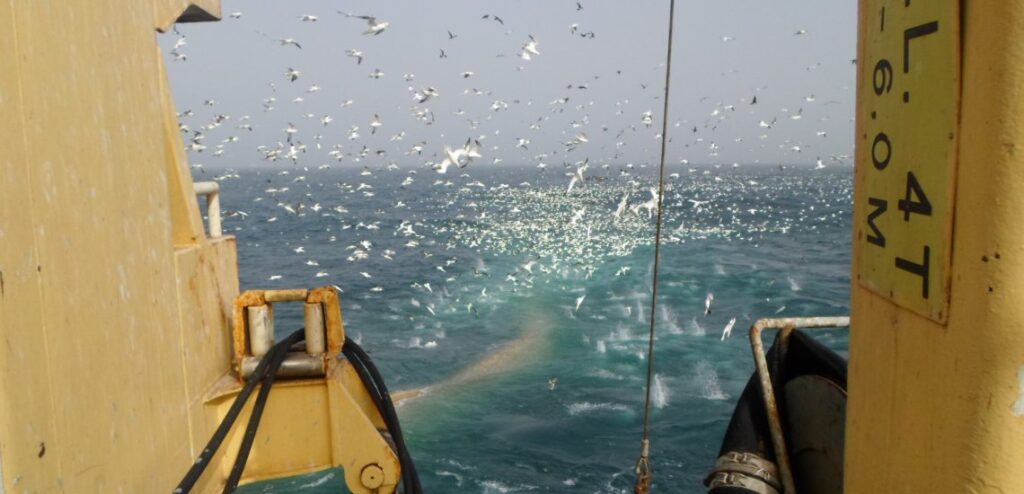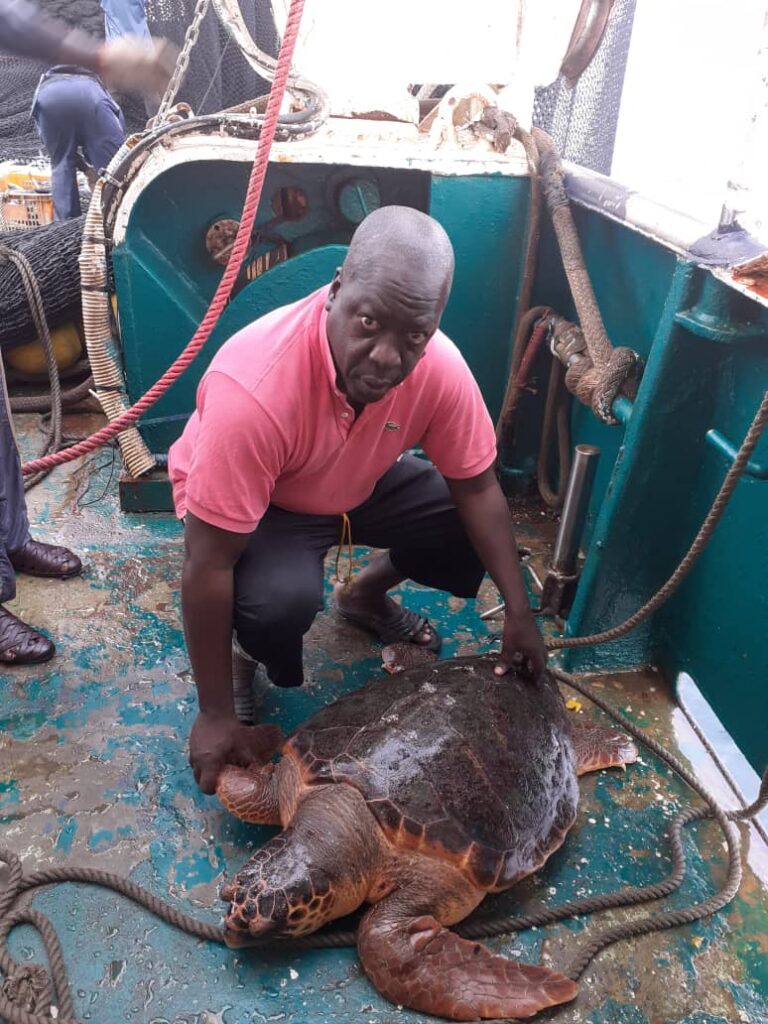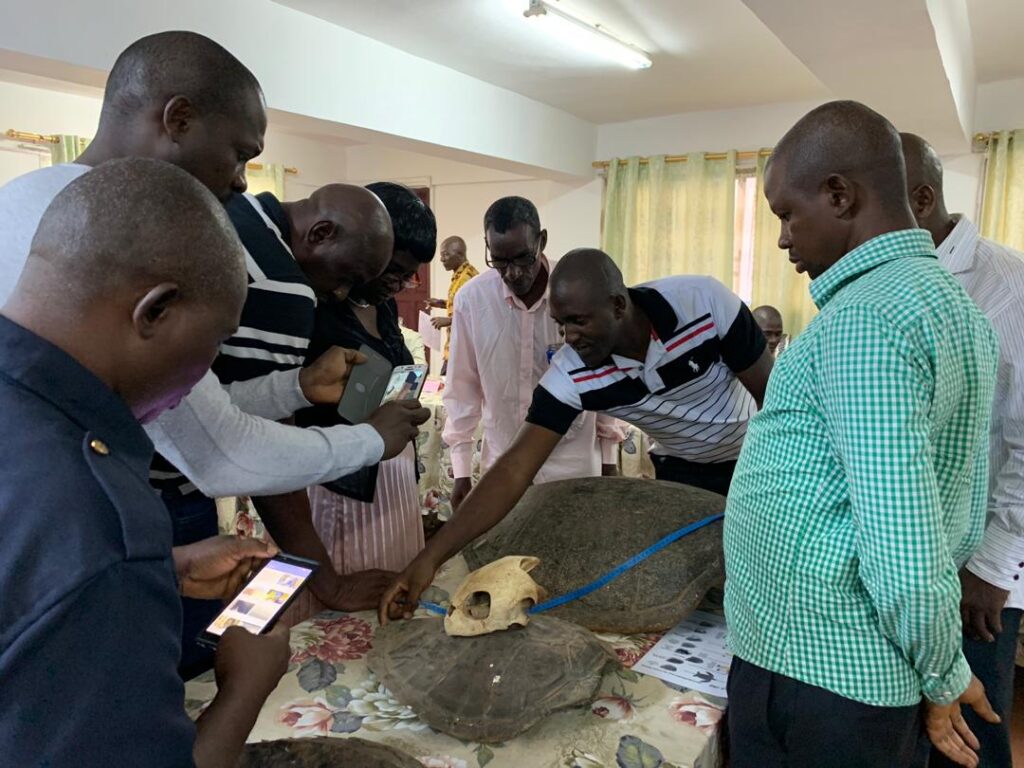Saving Seabirds and Turtles dying from fishing activities in West Africa

In the choppy waters of the Atlantic Ocean, off the Guinean coast, a fishing vessel moves effortlessly in the expansive waters. At one end of the vessel, six fishermen work in pairs as they haul a heavy net containing a large shoal of fish on board. The net also holds an unexpected catch: a seabird
By Elena Serra Sánchez
Seabirds are among the most threatened birds in the world, with many species in decline due among other threats to incidental catch, also known as bycatch, whereby seabirds and turtles are caught by fishing hooks or nets or they collided with cables dragged by big fishing vessels. Statistics indicate that globally more than one million seabirds are killed every year as a result of fishing activities.
However, this situation is being turned around using simple, low cost and highly effective measures to reduce unintended death of seabirds and turtles during fishing.
In the Southern Hemisphere, the Albatross Task Force, led by BirdLife International and the Royal Society for the Protection of Birds, the BirdLife partner in UK, working in Argentina, Brazil, Chile, Peru, Uruguay, Ecuador, South Africa and Namibia has managed to reduce seabird bycatch by more than 90%. Lessons learnt from the taskforce’s successes are now being incorporated in seven countries in West Africa through a MAVA funded project run by BirdLife International.
This project seeks to reduce seabirds and turtles’ bycatch in industrial fisheries, by 80% until 2022, covering Cape Verde, Gambia, Guinea, Guinea Bissau, Mauritania, Senegal and Sierra Leone. This sub-region is one of the most important fishing spots in the world as well as an important migratory corridor for birds that migrate between Africa and Europe.
There are many projects, laws and regulations in these countries protecting land birds, but hardly enough legislations to safeguard seabirds.

“Existing laws do not adequately regulate seabirds and turtles’ bycatch. Despite the fact that these laws stipulate preservation of endangered species, no enforcement is done to ensure that the fishing industry complies with these laws”, explains Ahmed Diame, the BirdLife Africa Bycatch Project Manager. Ahmed further says that countries in the sub-region have to harmonize their fishing laws, and understand the scale of fishing activities impact on seabirds and turtle population.
Despite the sub-region being a Key Biodiversity Area, an important flyway and a fishing spot for European, Chinese and Russian vessels, there is scant scientific data on bycatch, a problem that BirdLife is seeking to solve.
Capacity building is key to success
Capacity building of observers working at sea to supervise fishing activities is a key pillar of this by-catch project. Although governments are supposed to regulate fishing activities in the area, including checking whether fishing is being done in forbidden areas or the amount of fish being caught, this doesn’t always happen and most of the time, it doesn’t include the impact of these activities in other species like seabirds or turtles thus leading to unsustainable fishing. Through this project, fishing observers are being trained to conduct on board data collection regarding seabirds and turtle bycatch, including how to collect this data, and identify different species of these animals.
At the beginning of this project, a workshop was held in Senegal, where at least two observers from each 7 countries were trained on data collection. This was followed by national trainings conducted in Guinea, Mauritania and Senegal. “At the end of this training, we anticipate to have a network of people in the different countries collecting bycatch information, so they will be able to continue collecting this data as part of their regular tasks once the project ends”, says Oumar Ba, one of the two instructors of the bycatch project.

Anticipating the first results of the Bycatch Project!
Observer programs are starting to collect important data on turtle bycatch. On the other hand, data collection for seabird bycatch can be a complex task, owing to the swiftness of the occurrence. Seabirds strike trawler cables and go down in a matter of seconds.
“During the training, we show the observers videos, and photos of seabird bycatch to explain that this is a really fast event. We now need to complement the training with on board practice to strengthen their capacity, so they will be able to collect data soon. One of the main challenges of this project phase is that some vessel captains may see us as a threat, explains Ruben Rocha, the other project instructor.
Consequently, BirdLife is working with stakeholders in the fishing sector to facilitate boarding of instructors on vessels to help in seabird by-catch training. At the moment, negotiations are underway to reach an agreement with Cape Verdean Vessel Owners Association, while other negotiations are scheduled for Guinea and Senegal. Preparations for national training in Sierra Leone, Gambia and Guinea Bissau are also underway.
>> Follow the story of the bycatch project team in our next article as we look at some of the challenges facing the project


